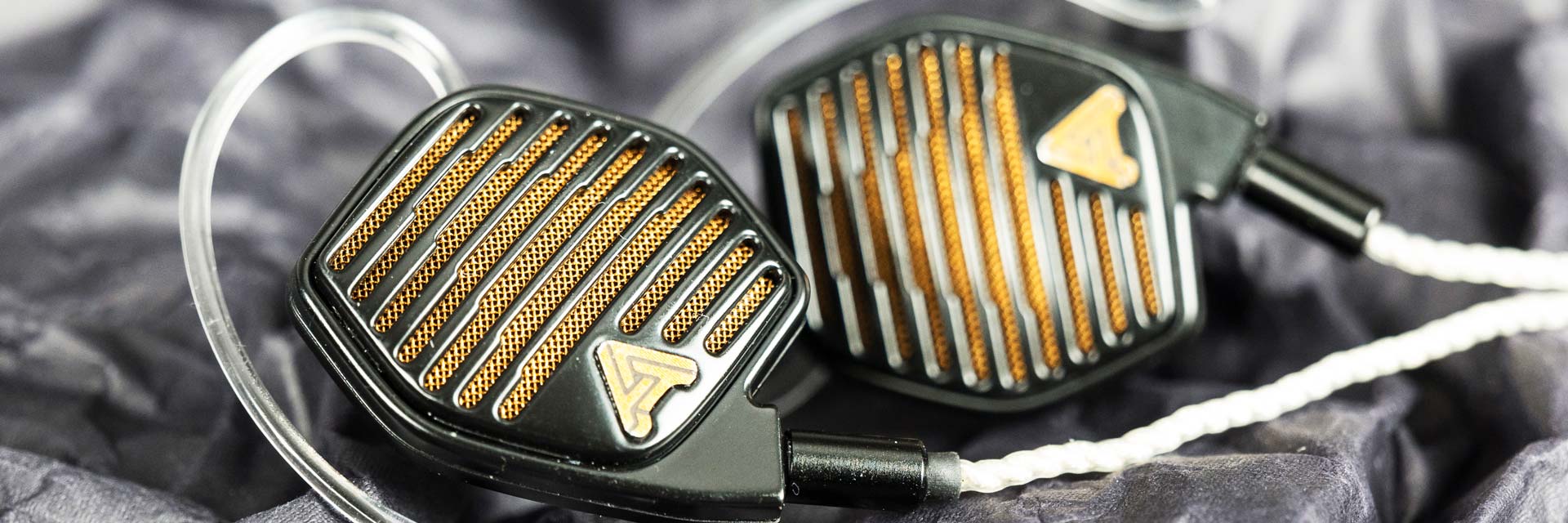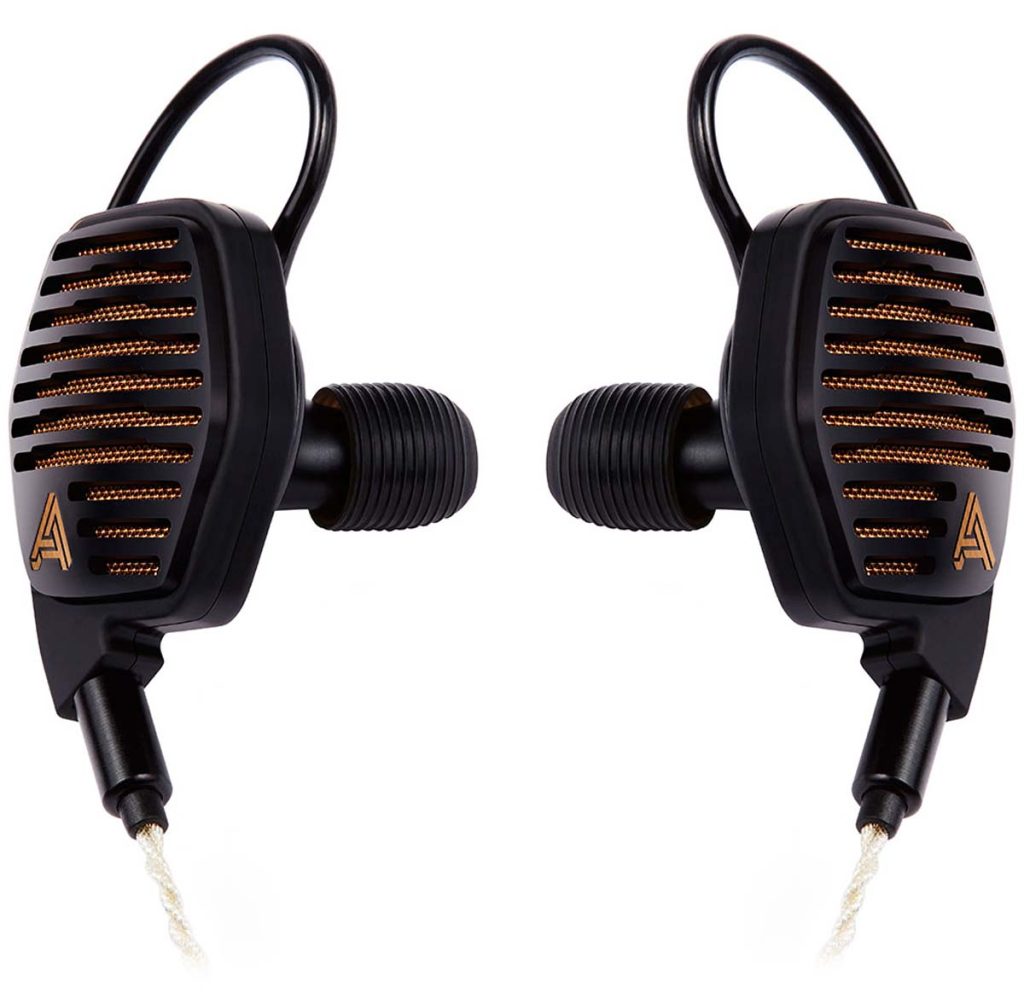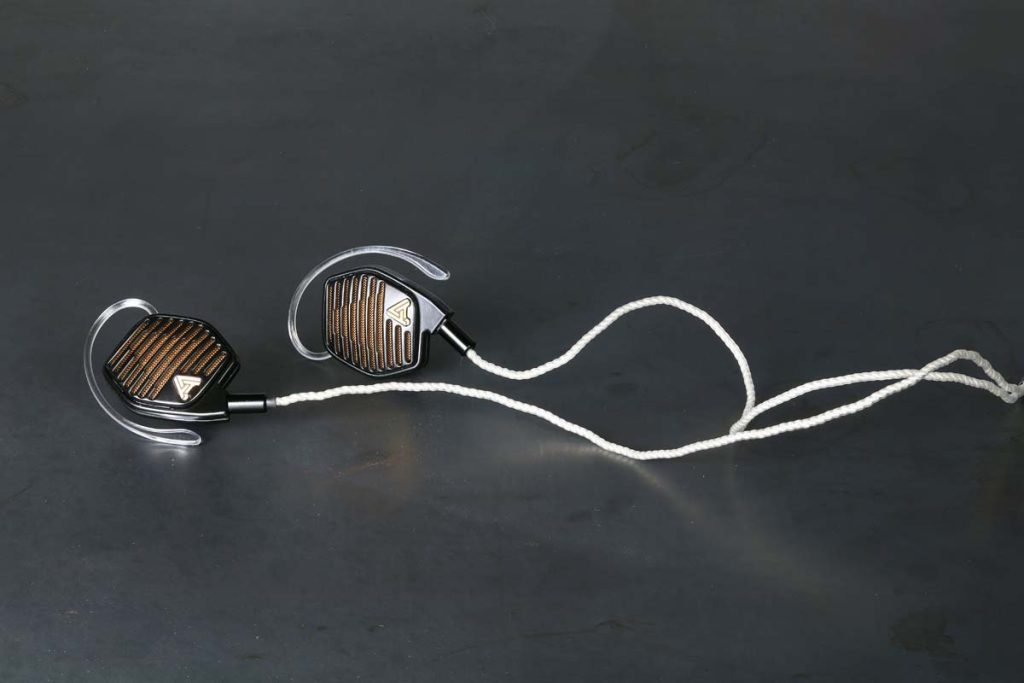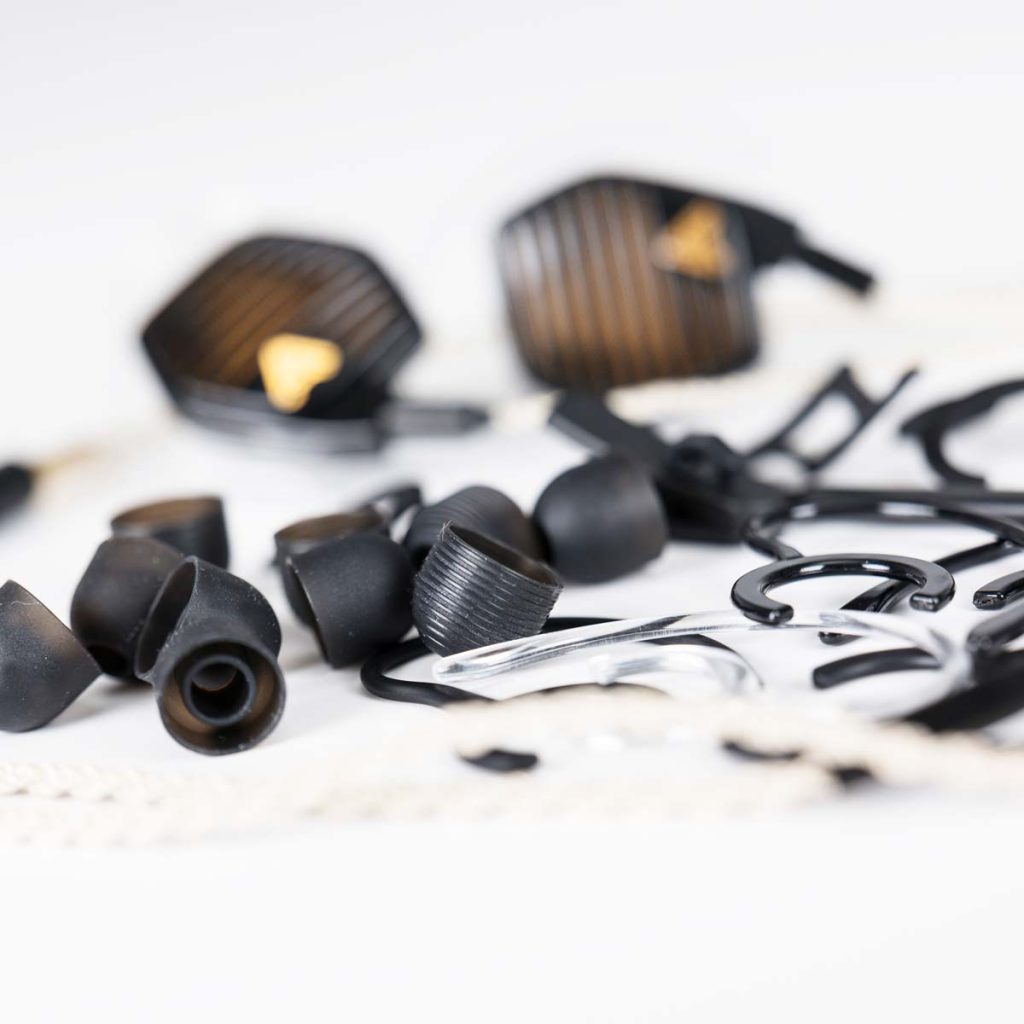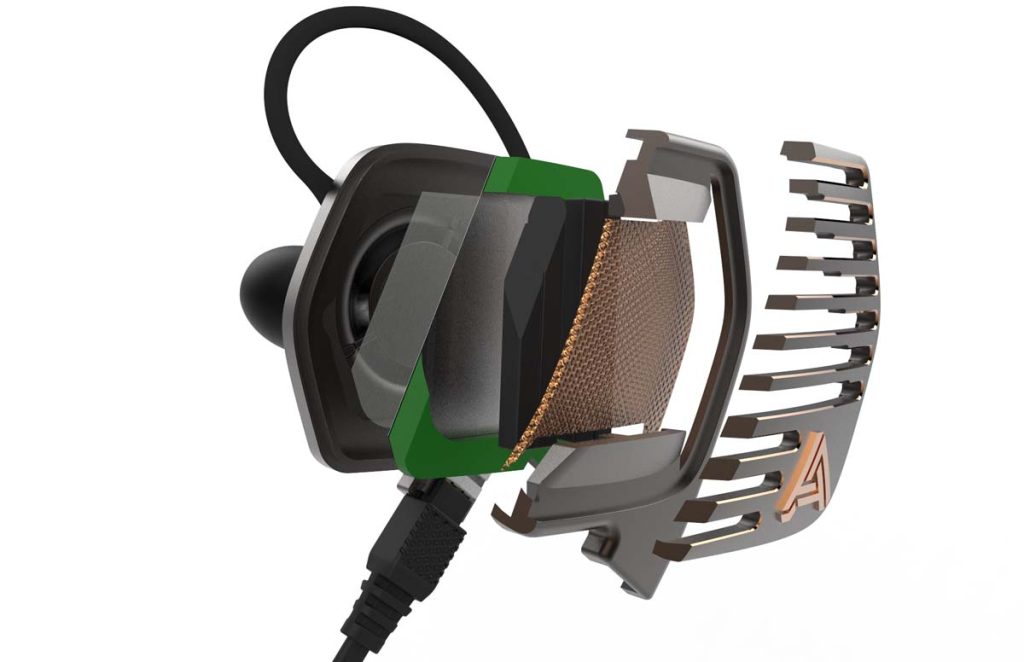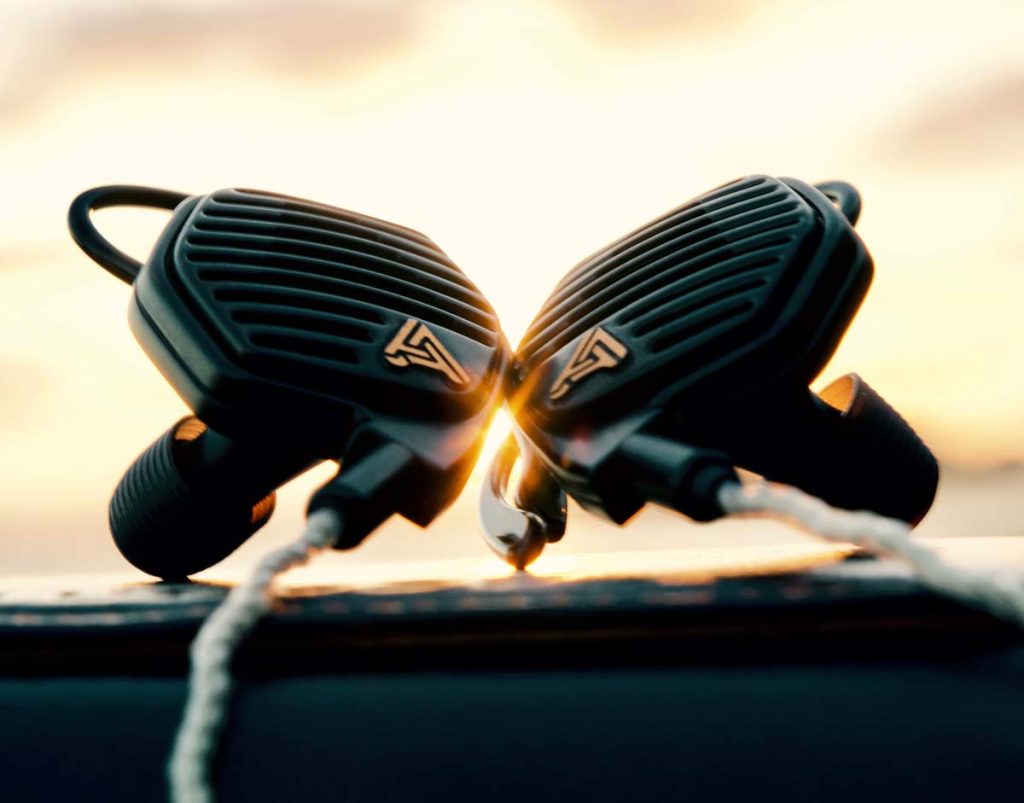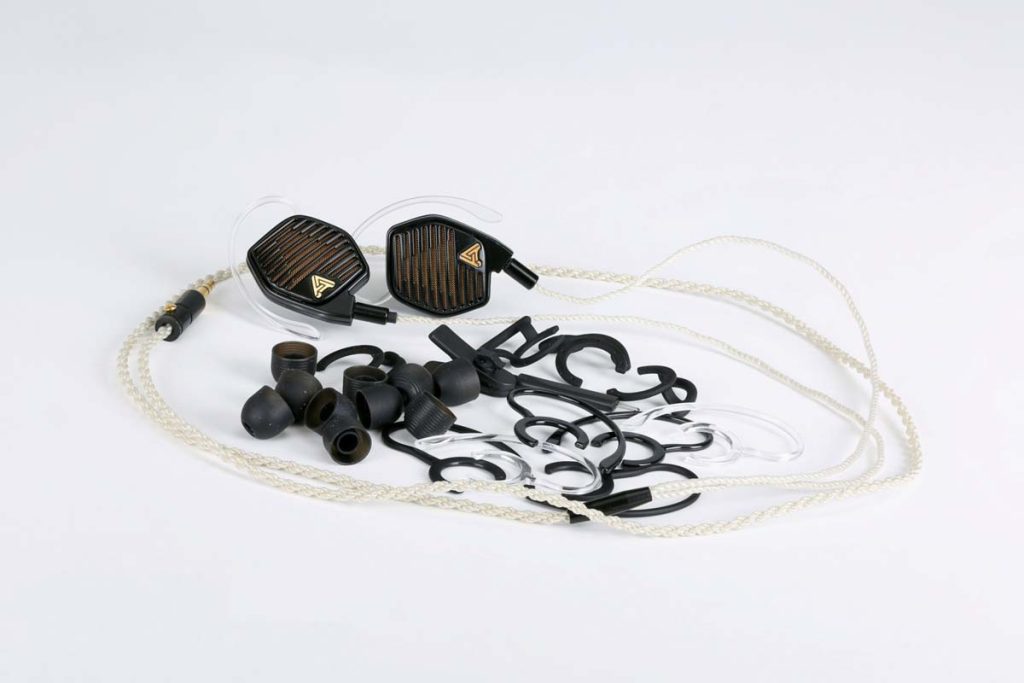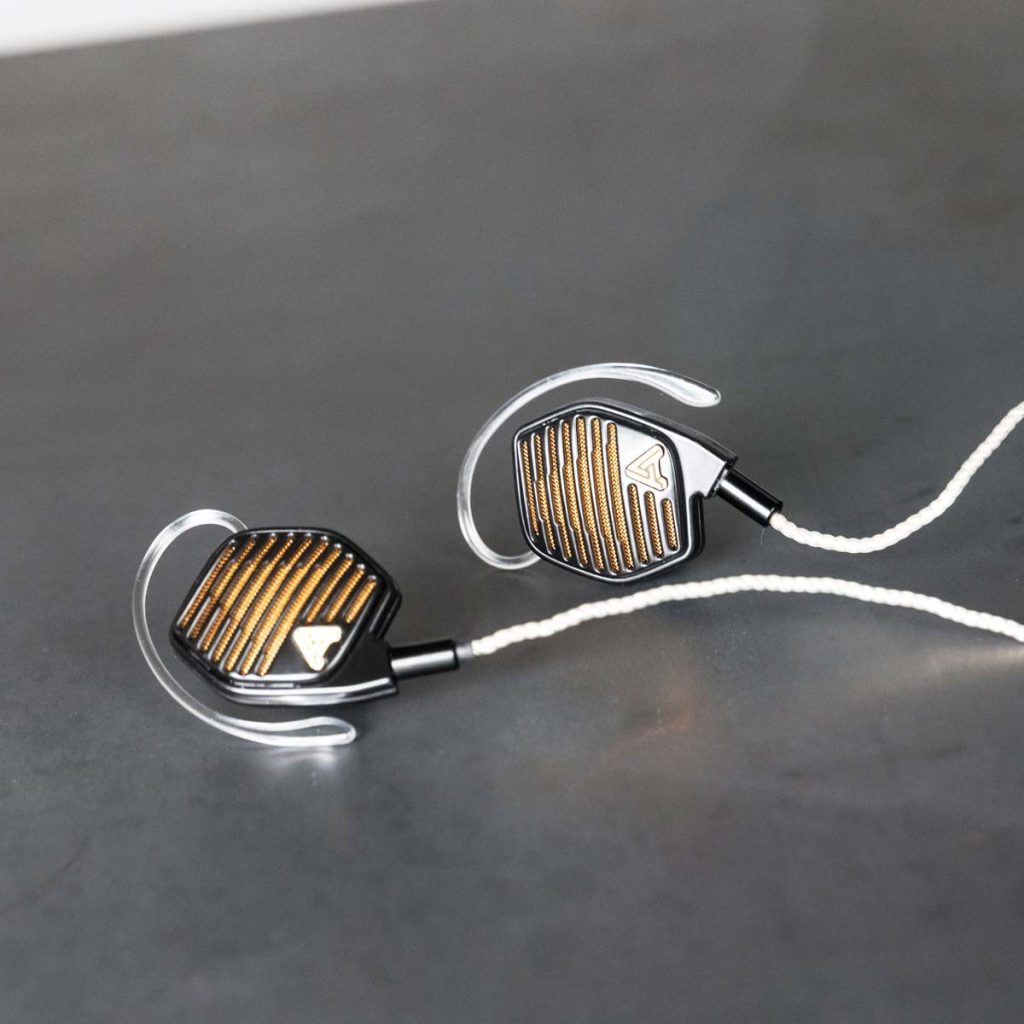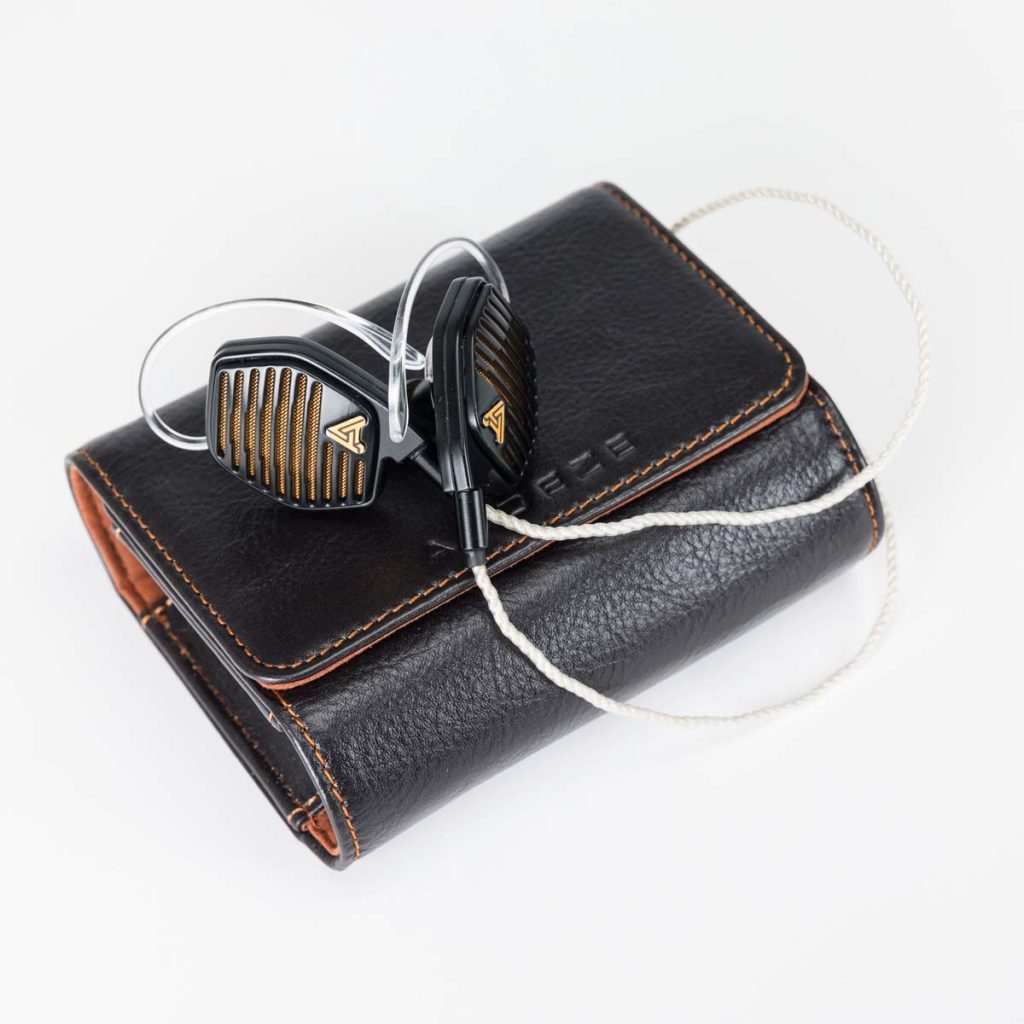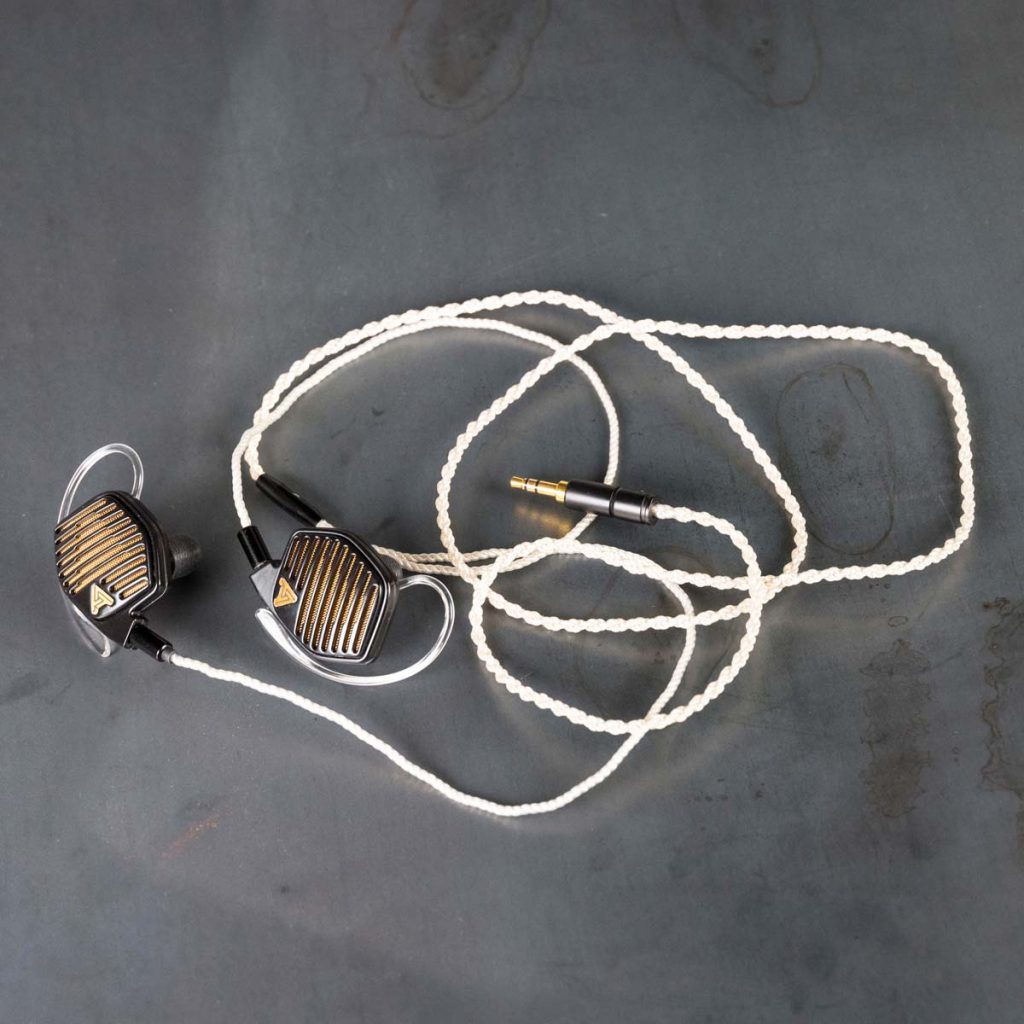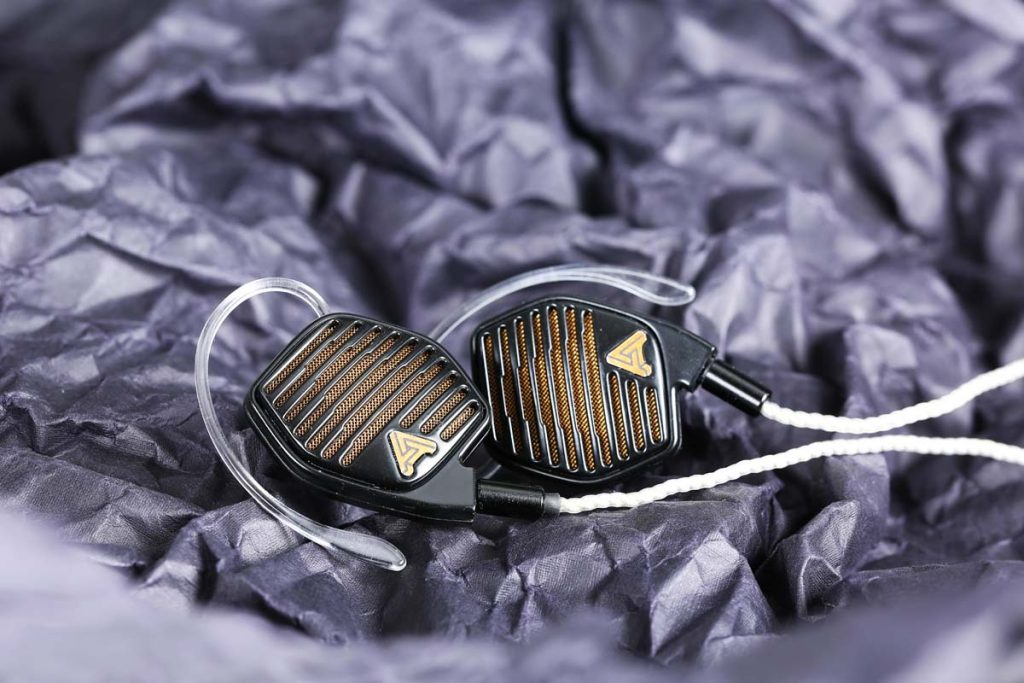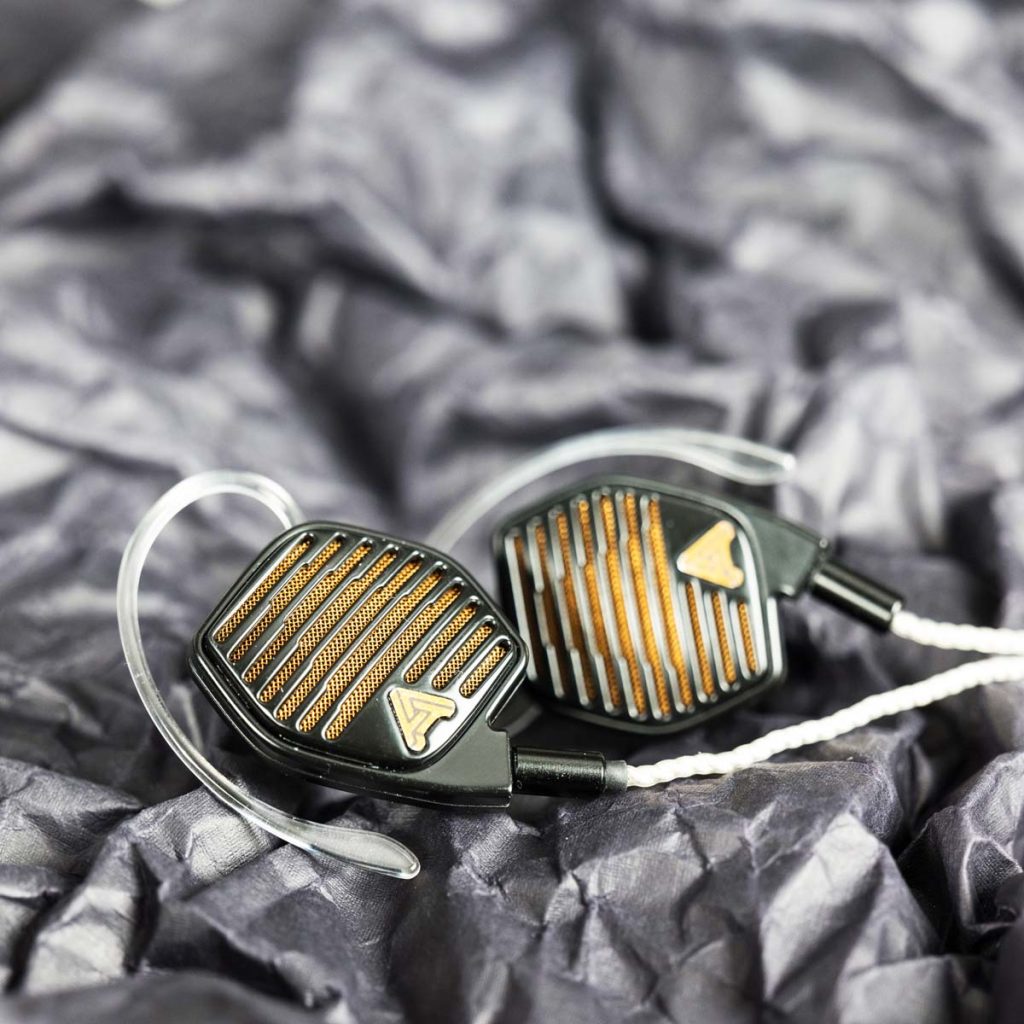Little Guy In Your Ear
Sound experiences with the great little in-ear buds Audeze LCDi4 point far into the future …
The two sound transducers couldn’t be more different, even when their model names differ by just one letter. I’m referring to Audeze’s luxury headphones LCD-4, which I wrote about in FIDELITY No. 28, and the new in-ear buds LCDi4, which I have worn unnoticeably nestled in my ear for several weeks now. The former is trimmed in lambskin and weighs 650 grams; the latter features rubberized plastic and weighs in at just 12 grams a side. You do, however, find some similarities when it comes to price — the over-the-ear model will set you back €4,000, the flyweights almost €3,000 — and the optimized film technology that has long attracted recognition and praise for Audeze. Further development has now also led to an in-ear headphone with this technology. Whether these two namesakes sound the same despite their apparently different points of departure is something I will determine with help from my media player Calyx M. It’s fully loaded with a playlist of hi-res files and accompanies me on numerous train trips.
Summit cross
That brings us to the actual scope of use I’ve planned for the precious earplugs, at least the most obvious one. Although some premium headphones are fit for travel — that is, you can fold them — you’re still left with a great deal of bulk and fussiness to deal with: Extra weight, space, awkwardness when opening the case on board an ICE or plane, packing them up again … The two flyweights in a stylish leather case hardly bigger than a pack of cigarettes come at just the right time to lighten the load of the stressed-out traveler. And let’s be honest: Don’t you sometimes have the feeling that you spend more time on the go than in your own living room? So why not just take the high-end system with you? And, like the power naps taken by stressed-out managers, we audiophiles have refined the art of power listening — even if it’s just 15 to 20 minutes when we can lose ourselves in the musical world of a great pop ballad, a jazz trio, or a symphony movement. And longer trips give us twice or three times the joy, as we get to explore an entire Wagner opera or an epic rock concert.
You now need more than two hands to count the number of mobile hi-res players suitable for the job. The corresponding in-ear buds are, however, sadly lacking. Sure, Audeze itself has been offering the iSine line, promising superior in-ear pleasure, but up to now the summit atop the audiophile’s Olympus hasn’t yet been reached. A job for the great little Audeze. And, by the way, the premium lightweights are also a welcome enhancement for home, office, or the balcony. At home surrounded by my own four walls, it’s a Chord Hugo2 that transmits the amplified, converted music files from a Linux laptop to the Audeze LCDi4. I mention this because the appropriate amplification is something we’ll discuss in more detail later on.
Fine workmanship
Held snugly in precisely fitted foam molding inside a package with a transparent lid and magnetic closure, the LCDi4 reminds me of little elephant ears. The company even provides a genuine leather bag for carrying the extensive accessories delivered with the ear buds. These include three pairs of differently sized ear adapters, each in two different designs. This means you get a total of six versions, so you’ll have an appropriately sized luxury bud for even the most angular ear canal. You also receive two different pairs of ear loops designed to accommodate variations in the outer ear. To determine the proper combination, it’s worthwhile to take the time and try them all out, both without music for fit alone and with music to fine-tune transmission of the “sound trunk” from the LCDi4 into the ear.
Changing the rubberized “topcoat” is quick and easy, while a little more care is called for when switching out the ear loops. It’s not befitting of the smart set to simply tear them off your ear — just as you don’t just toss around expensive designer glasses, either. Those who might be put off by the use of plastic in the Audeze LCDi4 should remember that every gram of weight matters with ear buds; after all, the melodious duo are meant to fit into the ear channels as imperceptibly as possible, and reinforced plastic is still the material of choice for that. A more stylish leather trim or similar finish would only add unnecessary weight.
Appetite for performance
To avoid any misunderstandings, let me state from the beginning: An earphone is not a closed-back headphone. This means you have both a minimal amount of noise transmitted to the outside — an aspect you can safely ignore with the LCDi4 — and louder external noise that can still penetrate to your ear. The extent to which this bothers you depends on the source of the noise and on the music you’ve selected. Popular pop, rock, and electronic tracks produced at a more or less constant volume in the medium to high range are practically immune to annoyances from the outside; highly dynamic classical recordings in pianissimo or chamber jazz like ECM are more likely to be impacted. During train rides, occasional travel noise is perceptible; but, more often, it’s those highly “clamorous” individuals who make themselves somewhat noticeable.
Particularly when it comes to dynamic recordings, it’s quickly evident that the miniature magnetostats require substantial, even powerful, amplification to demonstrate their outstanding qualities to the fullest extent possible. Media players such as the Calyx M and Fiio X7 seem to have already reached the top of their available volumes on some tracks, and I have the feeling I’m still missing out on that decisive kick, especially with classic and jazz recordings. The dynamic and downright holographic experience from well-produced electronic music such as Yello’s “Oh Yeah“ from their album Stella that Calyx M serves up will simply not engage with Leonard Bernstein’s Divertimento for Orchestra in the sensational recording of Eije Oue (on Reference Recordings).
It’s quite convenient that we happen to have Chord’s Hugo2 in house for testing. On the LCDi4, the combined DAC and headphone amp show off (even better than its little brother Mojo) not only their outstanding transducing capability, but, in particular, their excellent amplifying power. Hugo2, playing “Turkey Trot” from Bernstein’s orchestra suite on a Linux laptop using Clementine, produces a very special kind of experience: The Audeze LCDi4 comes very close to the utopia of having a hearing chip inserted directly in your brain. Drums and deep brass produce small, sensational sound explosions that seem to take place in your head between the temporal lobes. The result is an imaginary surround sound that locks into place in my head, making me almost feel I’m part of the orchestra. Fantastic!
But could this just be a coincidence, something that only happens with this specific recording? No way! Panoramic 360° sound also emerges from Melanie di Biasios’ album A Stomach Is Burning. Interspersed percussion, meandering flutter-tonguing in the deep registers of a flute and hard-to-place bell-like sounds encircle my head, making it difficult to distinguish whether the music is penetrating into my ear from the outside or directly from the inside. A little perplexing at first, it’s definitely a fascinating experience to have. The infinity of a sound is transported — a sound experience that will possibly be the standard in a few years, one already anticipating the cybernetics that will one day eliminate the boundaries between inside and outside, between human and machine. And Audeze’s LCDi4 makes it possible to experience this utopia right now, provided proper amplification is available. Here, the in-ears prove to be almost as power hungry as their over-ear counterpart, the LCD-4.
Winner of fours
But can we even acoustically compare the two foursomes from the US? To be honest: no. As exceptional as both the Audeze LCDi4 and LCD-4 are, they differ in their sound signatures. The small in-ears have a tidier, more transparent, and neutral effect. The on-ear model, on the other hand, produces a rounder and warmer tone, capable of topping off the deep bass with a little bit extra — extra sound that would seem a little too much of a good thing when directed right into the ear. Surprisingly, it’s the LCDi4 that conveys the more spacious panorama, a quality that usually comes up short with traditional in-ear buds but one I find completely convincing here.
I admit that I’ve generally refused to listen to music for lengthy periods with ear buds, having always preferred standard headphones for reasons related to both wearing comfort and sound. But the LCDi4 has captivated me to the extent that my limited but refined collection of over-ear headphones has remained “unemployed” for weeks on end. So I can’t deny saying this: Audeze’s new development harbors a certain potential for addiction. When it comes time for the (probably tearful) return of the magnificent LCDi4, I’ll later remember how I got to eavesdrop on the future of music listening right now!
In-ear headphones
Audeze LCDi4
Nominal impedance: 35 Ω | Sensitivity: 105 dB/1 mW | Power capability: 3 watts | Magnet type: Neodymium N50 | Diaphragm: Nano-Scale Uniforce | Cable length: 120 cm | Weight: 2 x 12 g | Warranty period: two years | Price: €2,990

